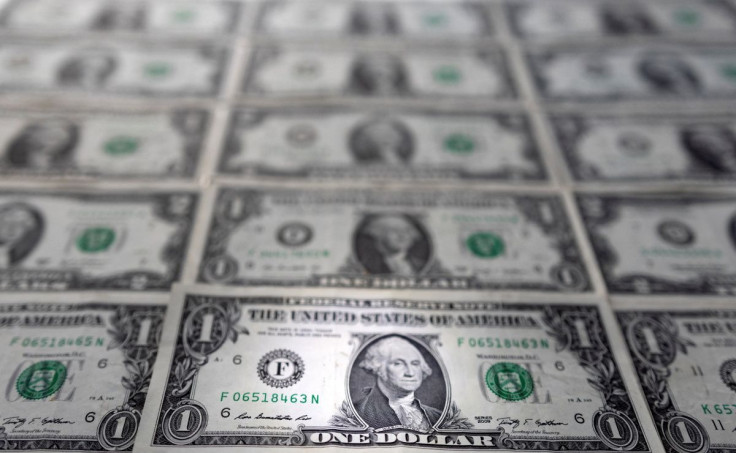Dollar Pauses For Breath, Eyes Best Month In A Decade

The dollar edged off a 20-year high on Friday, but was within sight of its best monthly gain in a decade, buoyed by bets on rising U.S. interest rates and worries about growth in Europe and China.
It has climbed each week in April, with this week's rise thanks to the Bank of Japan, which sent the yen falling through 130-per-dollar for the first time since 2002 on Thursday when it reinforced a commitment to its super-low yield policy.
The yen was last at 130.53 per dollar after falling as low as 131.25 on Thursday following the BOJ's pledge to buy endless amounts of bonds daily as needed. The yen is down almost 7% in April, its worst month since November 2016.
Thursday's uber-dovish decision set Japan even further apart from the Federal Reserve, where markets are priced for 150 basis points (bps) of hikes in just three meetings, and triggered a fresh rush of funds into the dollar ahead of all else.
The U.S. dollar index, which hit a two-decade high of 103.93 in the wake of the yen's tumble, was last at 103.40 and up more than 5.1% through April. If sustained, that would make for its best monthly gain since May 2012.
Weaker-than-expected quarterly U.S. growth data on Thursday proved little obstacle to the dollar's rise, and investors hardly adjusted their near-term interest rate bets.
The euro, meanwhile, dropped through $1.05 for the first time in five years on Thursday and was last clinging on at $1.0526. Trade was thinned in the Asia session by a public holiday in Japan.
"Like the yen, the euro is becoming more deeply undervalued against the U.S. dollar," said MUFG Bank currency analyst Lee Hardman.
"Market participants increasingly price in a widening divergence opening up between the performance of the euro-zone and U.S. economies and subsequently the outlook for European Central Bank and Fed policies."
The euro has lost almost 5% on the dollar in April and just nearly 7% on the dollar since Russia's invasion of Ukraine on Feb. 24.
The conflict, and especially this week's halt on Russian gas supplies to Poland and Bulgaria, has investors concerned about Europe's energy security, inflation and growth.
Similar fears have driven sterling to the 22-month low of $1.2412 it made overnight. At $1.2507 in Asia, the British currency is down almost 5% against the dollar in April, its worst showing since October 2016. [GBP/]
Drawn out COVID-19 lockdowns are also putting the brakes on an already-slowing Chinese economy, which has hit the yuan as well as commodity currencies.
The yuan touched an 18-month low of 6.6520 per dollar before rebounding a bit to 6.6130 as state media reports on a Politburo meeting were seen as an indication the government would roll out more stimulus to meet its growth targets this year.
The currency is on course for a monthly drop of 4.1%, the largest since currency reforms in 1994.
The Australian dollar made a three-month low of $0.7055 overnight before recovering to $0.7152 on Friday as investors think Australia's monetary tightening cycle is set to begin as soon as next week.
The Aussie is down 4.4% for April. The New Zealand dollar is heading for its worst month in seven years, having lost nearly 6% on the dollar, rose 0.5% to $0.6523.
Bitcoin held at $39,600.
© Copyright Thomson Reuters 2024. All rights reserved.



















